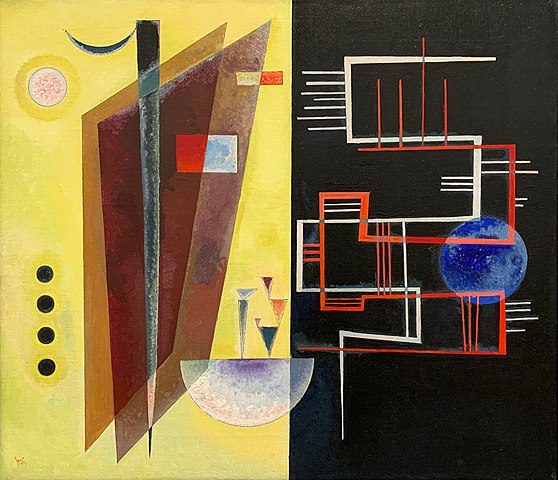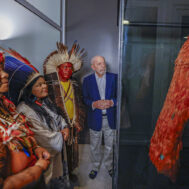Life used to be much simpler for both collectors and professional dealers. Collectors bought from dealers they knew. Dealers bought from collectors or other dealers they knew. Then, the Internet came along, and nothing was the same. The Internet both lowered barriers for entry into the marketplace and vastly expanded the reach of both buyers and sellers. With so much additional material visible to a much larger audience, it is not surprising more problem collectibles or outright fakes have appeared too. At the same time, the administrative state turned its attention to these expanding markets for art, antiques and antiquities. Conveying good title no longer just required ensuring that an item was not “stolen” in the traditional sense. Rather, both dealers and collectors had to start worrying about national patrimony laws, import and export controls, anti-money laundering regulations and paying taxes not only for one’s own state but for other states or even nations as well.

Arshile Gorky (1904–1948), Organization, oil on canvas, between 1933 and 1936
Collection National Gallery of Art, public domain.
How to navigate it all? Well, nothing is foolproof, but if you are a collector, consider purchasing from a dealer associated with recognized trade associations. And if you are a serious dealer, why not consider joining such an association?
A major benefit is that such dealers have been thoroughly vetted by current members. For example, the International Association of Professional Numismatists (IAPN), states,
“Membership to the Association is not lightly acquired. Applicants have to be sponsored by three members, and the vetting of applications involves a rigorous and sometimes protracted procedure. In order to be admitted the applicants must have been established in business as numismatists for at least four years and must be known to a number of members. The Committee needs to be satisfied that they have carried on their business in an honorable manners and that they have a good general knowledge of numismatics as well as expertise in whatever field is their specialty.”[2]
Typically, purchasing from trade association members also provides some assurances beyond any express or implied warranties of authenticity and good title under consumer protection laws. For example, members of the International Association of Dealers in Ancient Art (IADAA) take additional care in selling antiquities, an especially fraught area these days. In particular, they “undertake not to purchase or sell objects until they have established to the best of their ability that such objects were not stolen from excavations, architectural monuments, public institutions or private property.”[3]

Gaganendranath Tagore, Ahzan, tempera on paper, collection Indian Museum, Kolkata, photo by Xopolino , 27 October 2018, public domain.
Trade associations also inform their members about ever-changing regulations that impact the trade as well as perform advocacy work on behalf of their members. For example, the Art Dealers Association of America (ADAA) offers its members legal and legislative alerts and undertakes initiatives and lobbying efforts in support of both its members and the arts in general.[4] Dealers who are knowledgeable about ever increasing regulations are less likely to get themselves or their clients into trouble.
Trade association members often serve experts for government. For example, Joanna van der Lande, the Chair of the Antiquities Dealer Association, has served as an expert on numerous government panels including as an official valuer for United Kingdom’s (UK’s) Treasure Valuation Committee, as member of the European Commission Expert sub-group on Dialog with the Art Market, as part of a working group with UNIDROIT concerning private art collections and ‘orphan’ objects, and as a member of the U.K.’s Illicit Trade Advisory Panel until it disbanded in 2006.[5]
Encouraging fellowship among dealers is another important goal for many trade associations. IAPN was founded in the direct aftermath of WWII to reestablish relationships that had been badly frayed during the war. Every year, one member firm is tasked with organizing an annual Congress in one of the many cities around the world where IAPN members conduct business[6]. Substantive work is done at such Congresses, but there also is time for some fun, some sightseeing, and getting to know other IAPN members better.
A primary function of trade associations is to promote the business of their members. Usually, this takes the form of publicizing auction sales or other trade related events. Sometimes, however, such efforts are much more elaborate. For example, the ADAA conducts an annual art show where curated exhibitions of fine art are put on display at the Park Avenue Armory in New York City.[7] The show is not only a way to highlight member firms and their wares; it also serves as a charity event that benefits local community programs.[8]

Fortunato Depero, Grattacieli e tunnel, 1930, Museo di arte moderna e contemporanea di Trento e Rovereto.
Trade associations also offer specialized services to their members and the public. IAPN has established the International Bureau for the Suppression of Counterfeit Coins (IBSCC) to detect new fakes of collectors’ coins that appears on the market, and offer opinions when questions arise about the authenticity of coins submitted on behalf of clients of member firms.[9] Appraisals are another area where trade associations offer services to the public. However, the ADAA recently discontinued that service and instead makes referrals.[10]
Sometimes, trade associations even go the extra mile “to do the right thing.” For example, the Authentic Tribal Art Dealers Association (ATADA) has established a “voluntary returns” program which serves as a community-based initiative that aims to repatriate sacred and highly valued ceremonial objects back to Native American tribes.[11]
Sometimes even trade associations need help in navigating the ever changing and increasingly complex regulatory environment. For that reason, art-related trade associations that meet its strict membership criteria can join CINOA. CINOA stands for Confédération Internationale des Négociants en Œuvres d’Art. CINOA is a confederation of member associations established in 1935 to represent the international art, antiques and antiquities trade.[12] It “advocates for fair trade practices, ethical conduct, and the preservation of cultural heritage.”[13] With increasing international regulations, CINOA has become more important to the art trade than ever before, particularly when it comes to regulation in the European Union.
Trade associations help facilitate legal and ethical trade because they set standards, inform their members about rules and regulations, and provide decision makers with important information about industries they seek to regulate. They are an important part of the art, antiques, antiquities, and numismatic trade, but all too often their significance is overlooked.
Next Installment: It came from Outer Space

Plan 9 from Outer Space, poster, 1957. Library of Congress.
[1] Peter K. Tompa is a semi-retired lawyer who resides in Washington, D.C. He has written extensively about cultural heritage issues, particularly those of interest to the numismatic trade. Peter contributed to Who Owns the Past?” (K. Fitz Gibbon, ed. Rutgers 2005). He formerly served as executive director of the Global Heritage Alliance and now is a member of its board of directors. He currently serves as Executive Director for the International Association of Professional Numismatists.
This article is a public resource for general information and opinion about cultural property issues and is not intended to be a source for legal advice. Any factual patterns discussed may or may not be inspired by real people and events. The opinions stated in this article are the author’s alone and should not be attributed to any affiliated organization.
[2] See https://iapn-coins.org/association (last visited April 20, 2024).
[3] See https://iadaa.org/about-us/ (last visited April 20, 2024).
[4] See https://artdealers.org/about/mission (last visited April 20, 2024).
[5] See https://www.bonhams.com/specialists/1937/joanna-van-der-lande/ (last visited April 24, 2024).
[6] See https://www.iapn-coins.org/ (last visited April 22, 2024).
[7] See https://theartshow.org/ (last visited April 20, 2024).
[8] See https://theartshow.org/information/henry-street-settlement (last visited April 20, 2024).
[9] See https://iapn-coins.org/ibscc (last visited April 20, 2024).
[10] See https://artdealers.org/appraisal-service (last visited April 22, 2024).
[11] See https://atada.org/voluntary-returns (last visited April 20, 2024). See also Peter K. Tompa, Careful Collector No. 17 – ATADA Voluntary Returns Program for Native American Artifacts, Cultural Property News (July 19, 2023).
[12] See https://www.cinoa.org/about/ (last visited April 22, 2024).
[13] See https://www.cinoa.org/ (last visited April 24, 2024).
 Wassily Kandisky, Inner Alliance, 1929. Albertina Collection. Photo date 10 August 2019, author Benoît Prieur, CCO 1.0 Universal Public Domain Dedication.
Wassily Kandisky, Inner Alliance, 1929. Albertina Collection. Photo date 10 August 2019, author Benoît Prieur, CCO 1.0 Universal Public Domain Dedication. 

